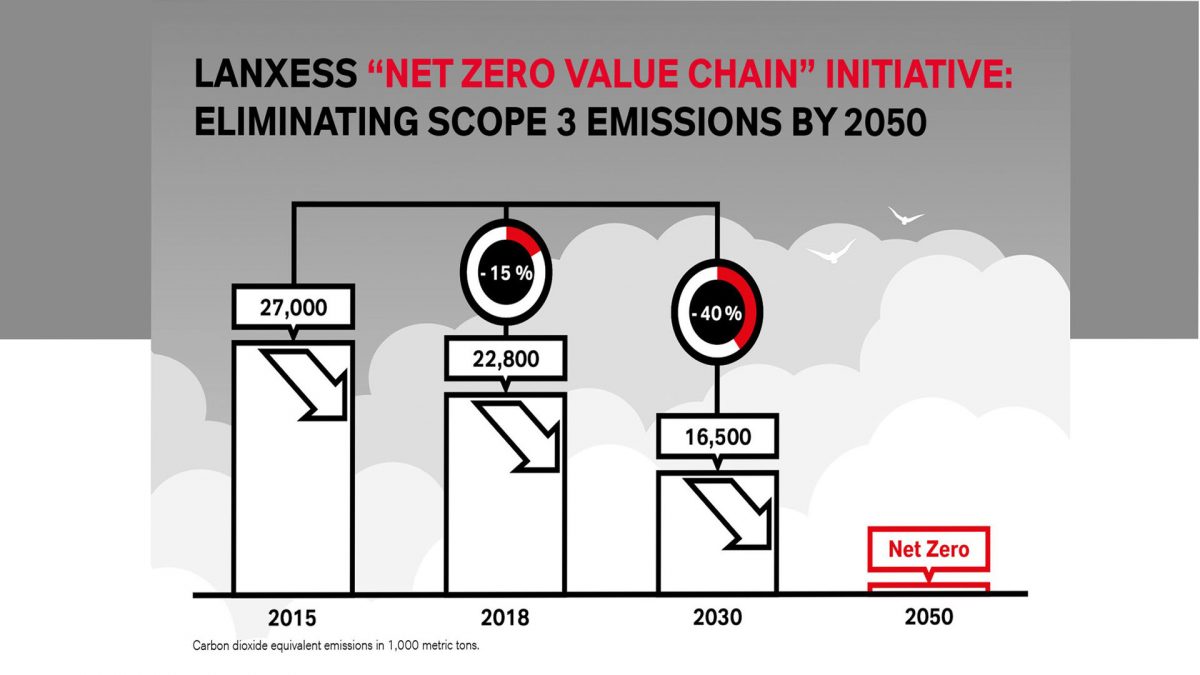Specialty chemicals company LANXESS is taking the next step in climate protection. It has set a target for its scope of three emissions: The Group aims to make its upstream and downstream supply chains climate-neutral by 2050. This includes indirect emissions, particularly from purchased raw materials and logistics and end products. By 2030, scope three emissions are to be reduced by 40 per cent compared with the base year 2015, from 27,000 to 16,500 kilotons of CO2 equivalents. For direct emissions in production (scope 1) and for energy sourced (scope 2), LANXESS had already set a target of becoming climate-neutral by 2040 three years ago.
“To stop climate change, our societies must transform to climate neutrality. We want to do our part. Our goal of becoming climate neutral in direct emissions and energy sourced by 2040 is already very ambitious. With the additional targets for our scope 3 emissions, we are taking the next step together with our suppliers and customers,” said Matthias Zachert, Chairman of the Board of Management of LANXESS AG. “The approval of our commitment by SBTi shows that we are on the right responsible path.”
LANXESS’ climate targets are in line with the Paris Climate Agreement. This has now been approved by the renowned Science Based Targets initiative (SBTi). The joint initiative of climate protection organization CDP, UN Global Compact, World Resources Institute and World Wide Fund for Nature has validated the Group’s targets for reducing its emissions and approved that LANXESS is helping to limit global warming to a maximum of 1.5 degrees Celsius. This temperature is generally considered to be the threshold for preventing a climate catastrophe.
“LANXESS joins the growing list of companies with science-based targets consistent with limiting global warming to 1.5°C,” said Luiz Amaral, Chief Executive Officer of the Science Based Targets Initiative. “We now need more corporate actors to set ambitious targets like LANXESS.”
Strategy developed for a climate-neutral supply chain
LANXESS has launched the Net Zero Value Chain Program to achieve its scope three targets. This strategy toward climate neutrality along the entire value chain is based on three pillars:
- Sustainable raw materials: LANXESS is realigning its raw materials purchase and is increasingly sourcing sustainable raw materials that are bio-based, recycled or produced using renewable energies. Current examples of these raw materials are sustainably produced cyclohexane for high-performance plastics under the Durethan brand or starch-based polyether polyols for prepolymers under the Adiprene brand.
- Green logistics: The CO2 footprint is weighted more heavily than before when selecting freight transport modes. LANXESS also intends to make use of innovative solutions, such as “green ships” with sustainable drive trains. Improved logistics planning is also intended to increase transportation asset utilization, optimize freight transport modes, and reduce demand for freight transport.
- Climate-neutral products: LANXESS is expanding its range of climate-neutral products and solutions with a low CO2 footprint. Since fall 2021, these products have been given the “Scopeblue” brand label. Examples include trimethylolpropane (TMP), about half of which is made from sustainable raw materials, or the composite Tepex, which is based on flax and lactic acid. In the medium term, LANXESS aims to offer low carbon and climate-neutral alternatives to all its products. The goal is to have exclusively climate-neutral products in its portfolio by 2050. LANXESS also wants to quantify the carbon footprint of all its products.
“With the Net Zero Value Chain Program, we are continuing to drive forward the transformation of our product portfolio toward climate neutrality. In this way, we are also supporting our customers, who are increasingly looking for sustainable solutions,” said Zachert.
